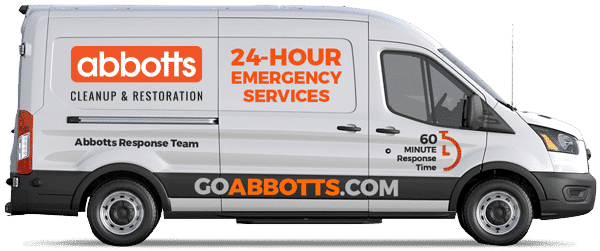
If the worst happens, we’re here to help. But we hope these resources help you NOT need us.
Before a Potential Flood Event
Start here. Ready.gov is a national public service project maintained by the Federal Emergency Management Agency. It’s an excellent starting place to get general information on emergency preparedness in a variety of circumstances, from floods to hurricanes. It can be overwhelming, though, so we’ve pulled out some quick-reference flood resources to help you focus on basic flood preparation.
Know the risks. You can learn about the flood risks in your geographic area by checking out historic flood maps. This FEMA resource includes instructions for reading the FEMA Flood Insurance Rate Maps and understanding the risks in your location. This resource also provides insights to help you understand whether or not you need flood insurance.
Make an emergency readiness kit. Include food, water and other supplies. Don’t forget supplies of needed medicines. Remember supplies for pets, too. This resource suggests supplies to consider.
Make a family emergency communications plan. When weather events and other hazardous events occur, your family may not be together. Make sure everyone understands how they should contact each other and where they should go. Talk about the plan and rehearse it.
During Flood Conditions
Make sure your family knows what to do during a flood. Things happen fast once flooding starts, so make sure your family knows the basics of safe actions in case of flooding. If flooding occurs:
- Go to high ground as fast as you can.
- Don’t try to walk across flowing streams or drive through flooded roadways.
- If water rises in your home and you can’t get out, go to the top floor, attic, or roof. If your attic has no outside access, get out!
- Listen to a battery-operated radio for the latest storm information.
- Turn off all utilities at the main power switch and close the main gas valve if flooding is likely.
- Treat floodwaters as if they are contaminated with chemical and biological hazards. Because they are.
- Remember that flooding can increase risk from wild animals such as snakes, venomous insects and injured, potentially dangerous mammals.
After a Flood
Have a plan to start recovering as soon as the waters recede. The task may be daunting, and you may be exhausted from the ordeal, but it’s imperative that you get started cleaning up and recovering your property as soon as possible to minimize damage and reduce restoration costs. Get started right away:
- If your home has suffered damage, call your insurance agent to file a claim. Abbotts can file your cleanup and restoration claim for you.
- Check for structural damage before re-entering your home or business.
- Take photos of any floodwater in your home or business and save any damaged personal property.
- Make a list of damaged or lost items and include their purchase date and value with receipts, and place with the inventory you took prior to the flood. Some damaged items may require disposal, so keep photographs of these items.
- Keep power off until an electrician has inspected your system for safety.
- Boil water for drinking and food preparation until authorities tell you that your water supply is safe.
- Prevent mold by removing wet contents immediately.
- Wear gloves and boots to clean and disinfect. Wet items should be cleaned with a pine-oil cleanser and bleach, completely dried, and monitored for several days for any fungal growth and odors.
- Check out additional resources at DisasterAssistance.gov. The Disaster Assistance Improvement Program’s (DAIP) mission is to provide disaster survivors with information, support, services, and a means to access and apply for disaster assistance through joint data-sharing efforts between federal, tribal, state, local, and private sector partners.
Disaster Preparedness for Your Business
Don’t forget to prepare your business for disasters. You can minimize the disruption of your business by ensuring that it’s prepared for disaster risks in your area. This benefits your family, your employees and even your customers, who may have limited choices for goods and services following a disaster.
We hope these tips help you protect your family and property. In the event that misfortune visits despite our best preparations, call Abbotts to get back to normal fast.





























































